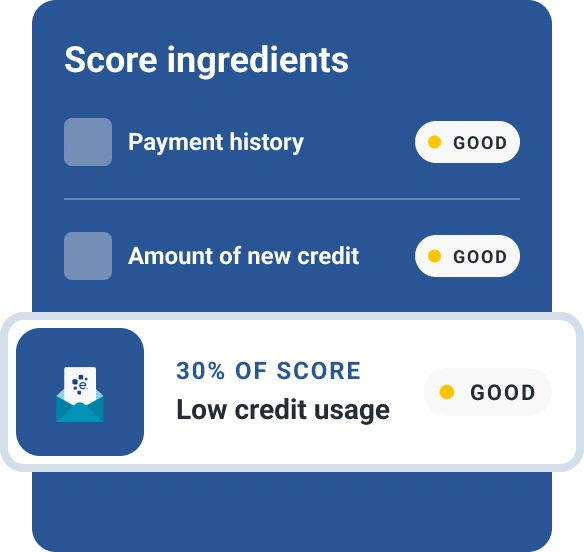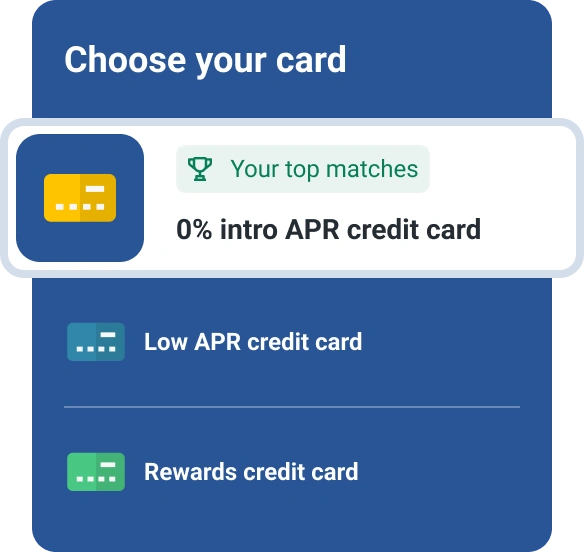What Is a Good APR for a Credit Card?
Quick Answer
What you consider a good credit card APR may depend on the national average rates and your individual creditworthiness. But, generally, an APR that’s in the low teens or below is a good APR.

A good annual percentage rate (APR) for a credit card is a rate that's below the current average credit card interest rate. A lower rate means you'll accrue less interest if you carry a balance on the card. With credit cards, "APR" and "interest rate" are used interchangeably since credit card APRs don't take fees into consideration (as is the case with other types of debt).
What Is a Good Credit Card APR?
A good credit card APR is one that's below the national average credit card rate, which is 21.47% as of November 2024, according to Federal Reserve data.
Average rates go up and down, impacted in part by benchmarks correlated with the federal funds rate set by the Federal Reserve. As a result, the standard for what's considered a good credit card APR can change over time.
How Your Credit Card APR Is Determined
Here are some factors that can determine your credit card interest rate:
- The card's interest rate range: Many credit cards have an interest rate range or several tiers of potential interest rates that the card issuer may offer.
- Your creditworthiness: The rate you receive will depend on your creditworthiness, which can be impacted by your finances and your credit history and score.
- Benchmark interest rates: Many credit cards have a variable interest rate, and your card's rate could go up or down as its issuer's benchmark rate changes due to business decisions or macroeconomic conditions.
- The type of transaction: Your card may have different APRs for purchases, balance transfers and cash advances. While the card's purchase APR may be the most important if you plan on using your card for transactions, it's still a good idea to familiarize yourself with the various rates.
With this in mind, what's considered a good APR for a credit card can also depend on the cardholder.
If you have a good to excellent credit score and can qualify for the lowest advertised rates, then a good rate for you might be a single-digit APR. But if you have a poor credit score, a good rate for you might be much higher.
Learn more:How Does Credit Card Interest Work?
How to Compare Credit Card Interest Rates
You can compare the interest rate ranges of the credit cards you're considering to see which might offer you the lowest rates. There are also some general rules that could help you compare credit card rates.
When you're comparing credit card APRs, you'll typically look at the purchase APR. The purchase APR is the rate you'll pay on purchases that you make on the card and don't pay off before the end of the grace period. But there are other types of APRs that you should be aware of, too—more on this below.
Some types of credit cards may come with higher rates. For example, rewards credit cards may have higher interest rates than cards that don't offer rewards. You can also typically expect to pay a higher rate on a credit card designed for people who are new to credit or rebuilding their credit, such as secured cards.
Learn more:What Credit Card Should I Get?
Types of Credit Card APRs
There are different types of credit card APRs that may apply to different types of transactions. Here's an overview.
| Purchase APR | This rate applies to purchases you make and don't pay off before the end of the grace period. |
|---|---|
| Balance transfer APR | This rate applies to balances you transfer from another card. It may be the same as your purchase APR. |
| Promotional APR | This is a temporary low or 0% APR that may apply to purchases, balance transfers or both. |
| Cash advance APR | This rate applies to cash you withdraw against your credit limit (and certain types of "cash-like" transactions). It's typically much higher than the purchase APR. |
| Installment plan APR | This rate applies to purchases that you convert to fixed payment plans, if your issuer allows it. |
| Penalty APR | This is a higher rate that may apply if you make a late payment. |
How to Get a Good Credit Card APR
If you want a credit card with a low APR, it's important to know where to look, what to look for and what will impact your card offer. Here are four ways you may be able to get a low credit card interest rate:
- Improve your credit. Improving your credit score can help you qualify for a better interest rate on cards that have an interest rate range. It can take time, but it could be a good option if you don't need a credit card right away.
- Negotiate your current rate. In some cases, you may be able to negotiate a lower APR on your current credit card. It may be worth contacting your issuer and requesting a reduction in interest rate if your credit or finances have improved since you first took out the card, or if you're experiencing a temporary setback that's making it difficult to afford your credit card payments.
- Consider cards from smaller financial institutions. You may be most familiar with cards from major banks, credit unions and card issuers because they're well advertised and may offer the best rewards or benefits. However, sometimes smaller credit unions and community banks may offer lower-rate cards.
- Look for promotional offers. Some cards have a low standard APR for purchases, or they offer a promotional low or 0% APR. Using one of these can ensure you don't wind up with a high APR, even if you don't have an excellent credit score.
Reading through card terms on each card issuer's website can take a lot of time. If you want to compare credit cards quickly, you can view credit cards matched to your credit profile and filter the results based on your preferences.
How to Avoid Paying Credit Card Interest
A low APR is nice when you need to carry a balance, but you can also regularly use a credit card without paying any interest. Here's how to avoid paying credit card interest.
Pay Off Your Card Each Month
If you pay your statement balance in full each month before the due date, then your purchases won't accrue interest during the statement period or during the grace period, which lasts from the end of the statement period to the bill's due date.
Some people incorrectly believe that carrying a balance can improve their credit score. While using your credit card is helpful, you don't need to carry a balance or pay any interest to benefit from using your card.
Stick to a Budget
Being able to afford your full statement balance can be more difficult if you overspend because you're not tracking your expenses. Consider setting up a budgeting app and connecting your credit card to keep an eye on when and where you're spending money. One way to keep yourself on track is to treat a credit card like a debit card and only make purchases that you can already afford to pay for.
Make Early Payments
Even with a budgeting app, it can be difficult to ensure you'll have enough money in your checking account to pay your statement bill—especially if you make large purchases at the beginning of your statement period and the bill isn't due for another six or seven weeks.
You could pay down your credit card balance throughout the month so you won't be surprised by a large bill. As an added incentive, early payments could lead to the credit card issuer reporting a lower balance to the credit bureaus. The lower balance means you'll have a lower credit utilization ratio (a comparison of your card's credit limit and reported balance), which can help your credit score.
Learn more: Will Paying My Credit Card Balance Every Month Help My Credit Score?
Check Your Credit Card Offers
Although avoiding interest altogether is ideal, finding a credit card that offers a low APR can help you save money if you expect to carry a balance. If you're not sure which credit cards you might qualify for, you can check your credit score for free with Experian. You can also browse credit cards and weigh options that may be available to you based on your credit, comparing their APR ranges, features and fees.
Discover low interest credit cards
Keep more cash in your wallet with a low interest credit card. See what offers you qualify for based on your FICO® Score.
See your offersAbout the author
Louis DeNicola is freelance personal finance and credit writer who works with Fortune 500 financial services firms, FinTech startups, and non-profits to teach people about money and credit. His clients include BlueVine, Discover, LendingTree, Money Management International, U.S News and Wirecutter.
Read more from Louis

